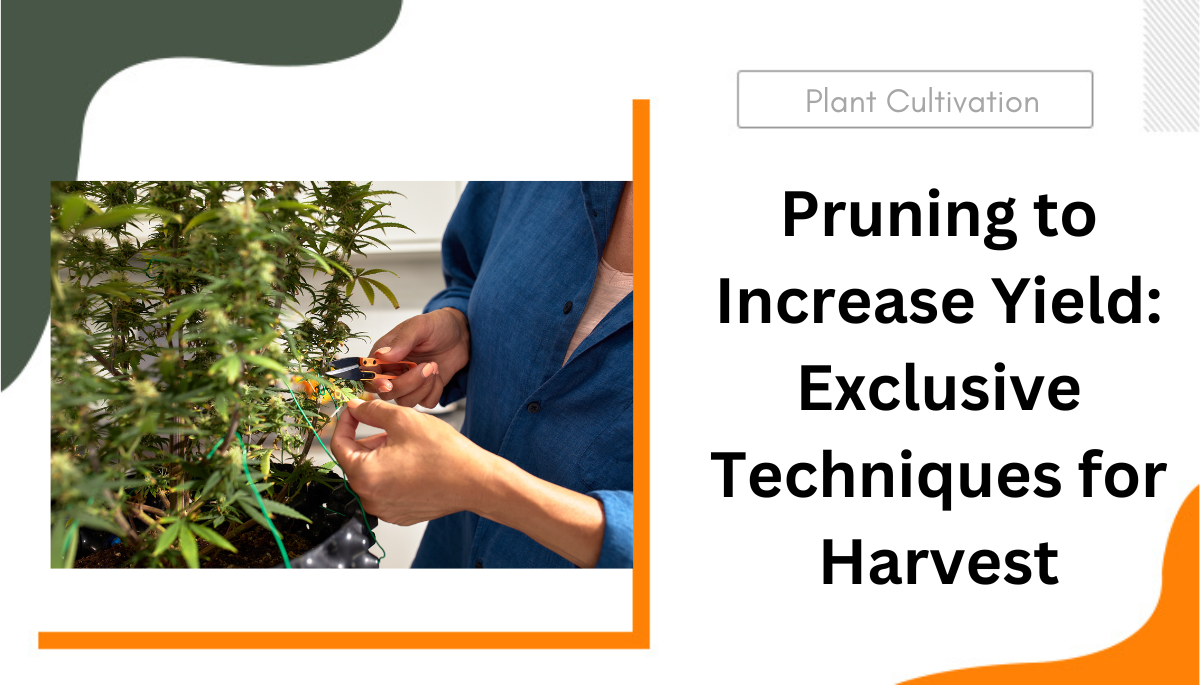Ultimate Guide on Pruning to Increase Yield [When & How]
Just like trimming our hair, plants need trimming as well, and that’s often referred to as pruning. For indoor growers, pruning is an essential practice to control the size, shape, and health of your plants and ultimately to boost harvests with increased yields. The question is when to prune your plants and how to trim cannabis properly to benefit the most.
In this post, we’ll walk you through some basic knowledge about pruning to increase yield, the right timing to cut off negative buds and branches, and valuable pruning techniques that contribute to better cannabis yields.
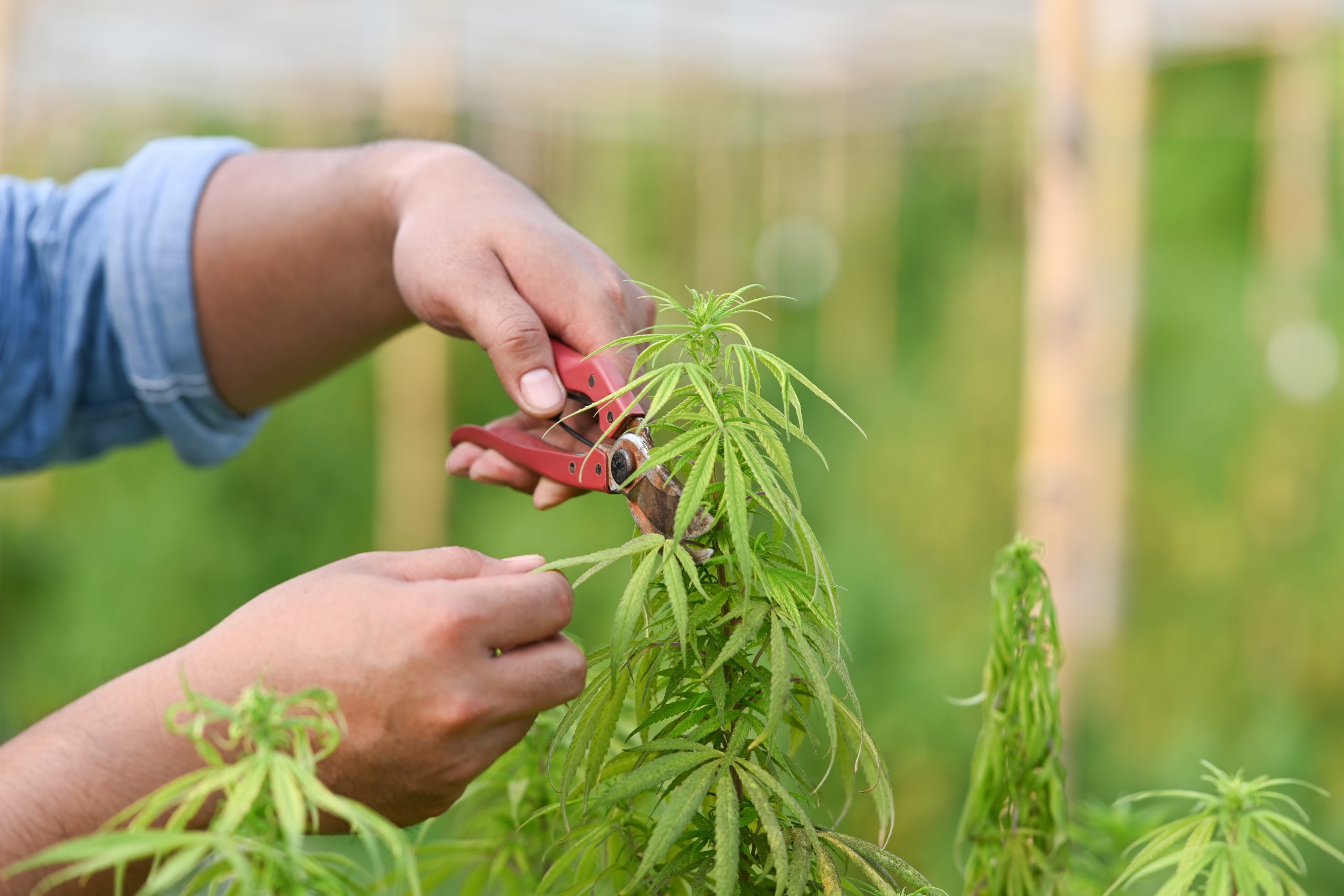
Table of Contents
How Pruning Helps Cannabis Thrive
To put it in an easy-to-understand way, pruning is to remove the unwanted parts of the cannabis and ensure all available energy and nutrients are serving the right portions that will later bear fruits. Sick, damaged, and unproductive branches, leaves, and buds can all be pruned to promote healthier and stronger growth and increase weed yields at the end.
To break it into pieces, you can enjoy the following advantages by pruning cannabis.
Increases Light Penetration
Cannabis plants require a wide range of growth light spectrum to grow and produce large, high-quality buds. By pruning away excess foliage and branches, more light can reach the lower parts of the plant. In this way, pruning cannabis promotes photosynthesis, the process by which plants convert light energy into food, and then results in bigger, denser buds.

Controls Plant Size and Shape
Cannabis plants can become quite tall and lanky if left unchecked, which can lead to weak stems that are unable to support heavy buds. Pruning helps to keep the plant compact and manageable, encouraging the growth of multiple branches instead of one tall main stem. This results in a more bushy plant with a larger surface area, which allows for more buds to grow.
Promotes Air Circulation
Good air circulation is essential for healthy cannabis plants. When plants are too close together or have too much foliage, it can be difficult for air to circulate properly, leading to the growth of mold, mildew, and other harmful pathogens. Although there is some inline fan that can be used to circulate the ventilation, a simple pruning is good enough to open up the plant and promote airflow.
Directs Energy to Bud Production
Cannabis plants exhibit an adaptive response to stress that promotes the production of more buds, resulting in higher yields. Pruning is an effective technique for inducing this response and directing the plant's energy toward producing high-quality flowers.
By removing lower, less productive branches, growers can redirect the plant's resources toward developing larger and more potent buds. What’s more, pruning ensures that the buds are evenly distributed throughout the plant, resulting in a more uniform crop.
When to Prune Cannabis for Optimal Outcome
Long story short, the vegetative phase, more specifically, the early vegetative stage is the best time to begin pruning cannabis plants, as it allows for removing unproductive parts and shaping the plant for optimal growth during the flowering stage.
One trick to decide whether to prune your cannabis or not is to take a look at the nodes and internodes. Typically, when there are 4 to 8 nodes during the vegging stage, you can start pruning cannabis.
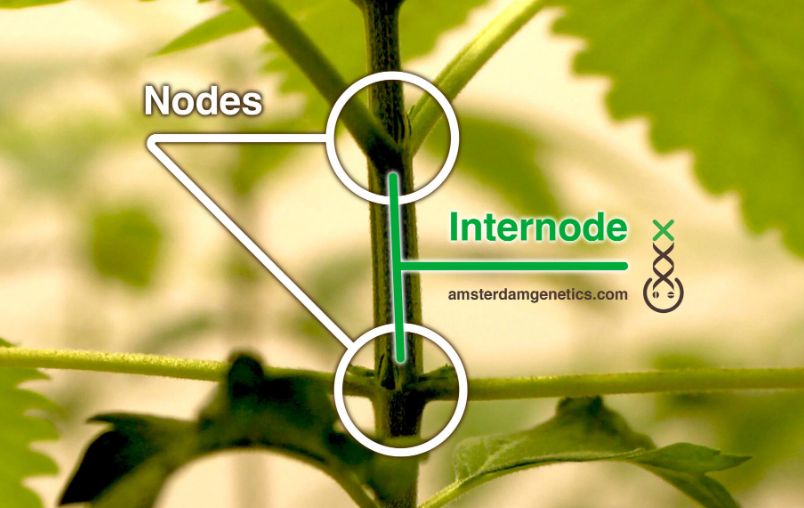
Pruning can also be done during the following stage, but please do it no more than two weeks into the flowering stage to avoid disrupting critical hormone production for flower and bud production.
In addition to pruning in a certain stage, you can always prune anytime for dead or damaged wood. As cannabis matures, its branches, buds, and leaves can sometimes get messy due to unexpected issues. For example, you may encounter hermie plants with pollen sacs on the buds. Or, you can spot cannabis leaves curling up with crispy tips. Under these circumstances, pruning cannabis becomes more urgent than ever.
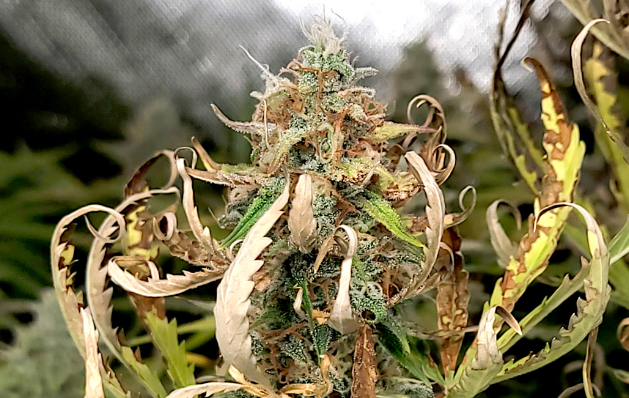
How to Trim Cannabis to Increase Yields [Tools, Techniques & Steps]
Now you know what to prune and when to prune, here comes the most difficult part, how to effectively prune cannabis? To help you out, we’ll dive into this question with a detailed tutorial, including all the tools and techniques required for making the right cuts.
Step 1. Determine the Time and Area for Cutting.
Make sure your cannabis has stepped into vegging stage and look for areas with fewer leaves or branches, as they are less productive and may be blocking light and airflow to other vigor parts. Also, remove any dead or dying leaves such as yellow and brown ones.
Step 2. Prepare the Pruner.
Use sharp, clean scissors or pruning shears to make clean cuts and minimize damage to the plant. When removing lower interior leaves, it is best to use precision pruning snips or fine scissors.
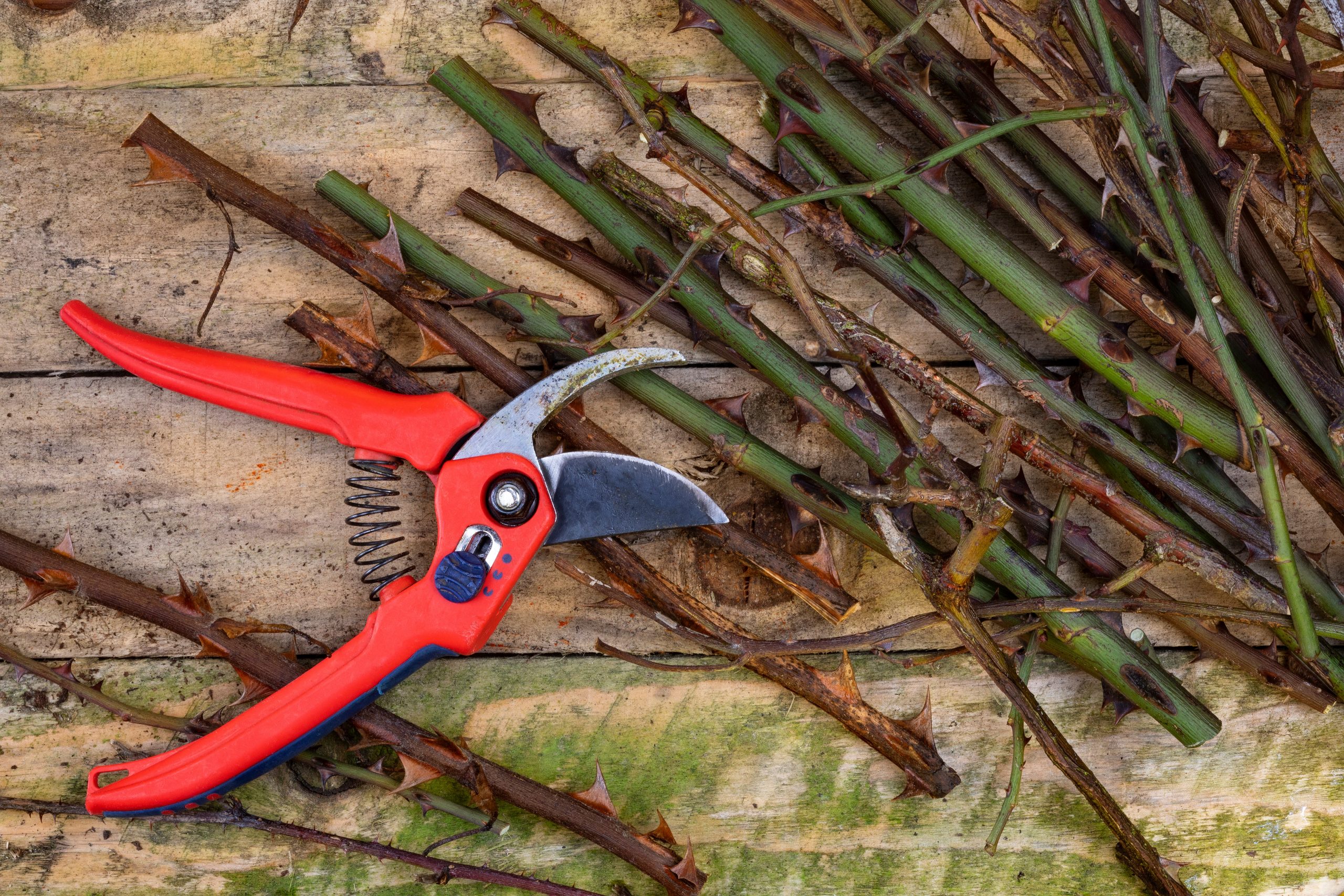
Step 3. Trim the Lower Branches - Lollipopping.
Instead of cutting stems and leaves randomly, there are actually a variety of pruning forms to increase yields, and lollipopping is one commonly used technique to maximize current bud sites by removing the lower stems and leaves. Why start with them?
As you possibly know, different parts of the plants don’t receive adequate lighting. It’s always the upper stems and branches that absorb most of the light and therefore become more vibrant and productive than the lower ones. Therefore, some growers just remove the least productive leaves for overall growth, and that is called lollipopping.
Step 4. Prune the Middle Section by Topping or Fimming
Besides the lower parts of the cannabis, we bet there are also incompetent branches and buds in the middle of your plant where they are supposed to thrive. To prune them, you have two options - Topping and Fimming.
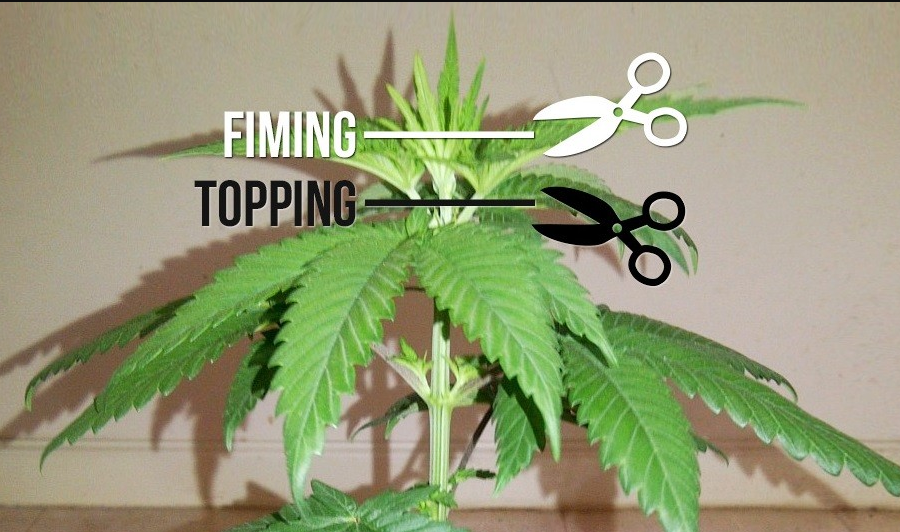
Topping
Topping simply means cutting off the upper-most portion of the plant, generally known as the apical meristem, after the plant has fully reached around 10 inches, and has at least 4-5 sets of leaves during the vegetative state.
By topping your cannabis, it affects a natural process called apical dominance. To put it in an easy way, this means that plants grow upward instead of outward. The top of the plant produces a hormone called auxin, which inhibits the growth of lateral buds. However, when you remove the apical bud by topping, the production of auxin decreases, leading to an increase in lateral growth.
However, you should bear in mind that this whole regeneration takes time. So be patient and wait for new shoots and nodes.
Fimming
Fimming is another pruning technique that is similar to topping and can also help increase your cannabis yield. However, instead of making a complete cut, you only remove about two-thirds of the growth shoot with FIM. This method stimulates the growth of four new shoots each time you prune the cannabis. While you can perform FIM multiple times, it takes longer to recover than topping, so you need to wait longer in between FIM sessions.
Step 5. Prune the Upper Sections [Do It Carefully]
The upper parts of your plant should bear more and bigger buds because they catch most of the light to grow, however, if you spot any unhealthy signs, such as yellow, brown, or skinny leaves, get rid of them.
Kind reminder: don’t over-prune at this stage. The upper branches and leaves shouldn't be too bad if taken good care of and aggressive pruning can hurt and even kill your plants.
Summary
By removing unproductive parts of your plant and redirecting its energy toward producing flowers, pruning is an effective technique that helps increase cannabis yields. This post covers when to prune and how to prune cannabis with a detailed step-by-step guide. Depending on which parts of the cannabis you work on, choose appropriate pruning methods such as lollipopping, topping, and fimming.
FAQs about Pruning to Increase Yield
- How do you maximize yield in growing?
To maximize yield in growing, you have to consider a wide combination of factors such as selecting high-yielding strains, maintaining proper environmental stresses, applying the right nutrients, managing pests and diseases, and employing proper pruning techniques.
- How do you increase yield during flowering?
To increase yield during flowering, focus on optimizing the plant's living environment and providing the necessary nutrients, plus proper pruning. This includes controlling temperature and humidity, ensuring adequate lighting, and feeding the plant with appropriate amounts of nitrogen, phosphorus, and potassium.
- Does lollipopping increase yield?
Yes, lollipopping does increase yield by removing lower growth that would otherwise not receive enough light to produce high-quality buds. This allows the plant to focus its energy on the topmost buds, resulting in larger and more potent yields. Additionally, lollipopping can improve airflow around the plant, reducing the risk of mold and other issues.
- Should I trim fan leaves during flowering?
You can trim dead and dying fan leaves during the flowering stage whenever you spot them, but it’s generally not recommended to prune fan leaves massively at this time as they play a critical role in photosynthesis. Removing too many fan leaves can reduce the plant's ability to produce energy, which can ultimately lead to lower yields and lower-quality buds.


